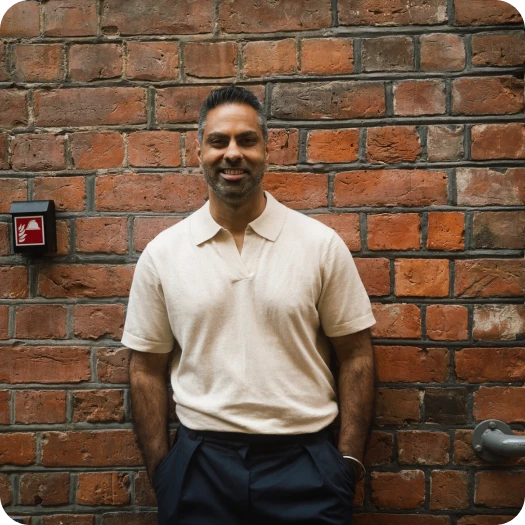70% of Americans say they don’t earn enough money


For some, enough means covering the essentials without anxiety. For others, it means reaching a point where money no longer dictates their choices. The key is defining what enough looks like for you so you’re not endlessly chasing more without a real purpose.
The Three Levels of Financial Freedom
Your idea of enough isn’t static, either; it evolves over three levels as you gain more financial control:
-
Survival mode
At this stage, enough means finally breaking free from the stress of living paycheck to paycheck. You’re covering your rent, utilities, and groceries without constant fear of overdrawing your account.
An emergency fund with at least three to six months of expenses provides a much-needed cushion; with this cushion in place, you can handle minor unexpected costs without spiraling into debt. It’s not luxury, but it’s security—the point where money stops being a daily source of anxiety.
-
Comfort zone
Once survival is no longer the goal, enough starts looking like flexibility. You’re saving and investing regularly, not just scraping by. You can spend on things that bring you joy—whether that’s travel, hobbies, or experiences—without guilt or second-guessing every dollar. You have the freedom to make career moves based on what excites you rather than just what pays the bills.
At this stage, personal growth and financial freedom go hand in hand, allowing you to design a life that fits you.
-
Complete liberation
At the highest level, money is no longer a limitation. Work becomes optional because your passive income supports your lifestyle. Instead of grinding for more just for the sake of it, you prioritize experiences, meaningful projects, and personal fulfillment.
You’re not trying to keep up with anyone—you’re living on your own terms. If you find yourself still chasing a higher number without a clear purpose, it’s worth asking: are you actually building freedom, or just working out of habit?
Self-Assessment Quiz: What’s Your Financial Freedom Level?
Take this short quiz to see where you are on the financial freedom spectrum. Choose A, B, or C for each question:
- How do you feel about your financial situation?
- A) I constantly worry about bills and unexpected expenses.
B) I have breathing room, but I still have financial goals I need to reach.
C) Money is no longer a source of stress—I spend freely on what matters. - How do you approach spending money?
- A) I have to be careful and make every dollar count.
B) I can afford things I enjoy, but I still have financial responsibilities to prioritize.
C) I make decisions based on joy, not money—I don’t need to budget strictly. - If you lost your primary source of income today, what would happen?
- A) I’d be in serious trouble—I rely on every paycheck.
B) I’d be okay for a while, but I’d need to find a replacement income soon.
C) I wouldn’t be worried—my investments or passive income can cover my lifestyle.
Your results:
Mostly A’s → You’re in Survival Mode.
- Your goal: Build stability first—start with a strong emergency fund and lower debt.
- Focus on: Covering essentials, reducing financial stress, and saving consistently.
Mostly B’s → You’re in the Comfort Zone.
- Your goal: Create flexibility and options for your future.
- Focus on: Increasing investments, building passive income, and designing a life with more freedom.
Mostly C’s → You’ve achieved Complete Liberation.
- Your goal: Align your wealth with your values.
- Focus on: Enjoying life, creating impact, and defining your next chapter.
Now that you know your current level, use the Conscious Spending Formula to reach the next stage of financial freedom.
Conscious Spending Formula: Calculating Your Personal “Enough” Number
Instead of blindly chasing a higher paycheck, real financial security comes from how you manage what you have. The Conscious Spending Formula helps balance essentials, savings, and joy, so you’re not just earning—you’re actually experiencing more. Here’s how to structure your money:
- Fixed costs (50–60%): These are the must-pay expenses that keep your life running smoothly, such as rent/mortgage, utilities, insurance, and necessary transportation.
- Investments (10–20%): This is how you turn money into more money so you’re not reliant on a paycheck forever. Investments can include retirement accounts, index funds, and low-cost diversified investments.
- Savings (5–10%): Basically any money set aside for both security and future opportunities, such as emergency funds, future goals, and financial safety nets.
- Guilt-free spending (20–30%): This is where most people go wrong and end up cutting back so much that they resent their financial plan. Instead of feeling deprived, you should be able to spend freely on what actually makes you happy: travel, dining, hobbies—whatever makes life feel rich.
If your money is disappearing every month but you still feel like you don’t have enough, the problem isn’t your income. It’s how you’re allocating it.
To make structuring your money easier, download your copy of the Conscious Spending Plan below:
How to Avoid the “More, More, More” Trap
Most people assume that more money equals more happiness, but in reality, the pursuit of more is often a never-ending cycle. If you’ve ever thought, “Once I hit [$X], I’ll finally be secure,” only to move the goalpost every time you get close, you’re stuck in the More Trap—constantly chasing a number that doesn’t exist.
The problem? More money alone doesn’t create financial freedom. Without an intentional plan, you can always feel like you’re behind, no matter how much you earn.
Here are three common money traps and how to escape them:
-
The hedonic treadmill: Why more never feels like enough
Lifestyle inflation is sneaky. You get a raise, but instead of feeling more secure, you upgrade your car, rent a nicer apartment, and eat out more. Suddenly, your expenses have risen just as fast as your income, leaving you feeling stuck with the same financial stress.
How to escape:
- Before increasing your spending, ask if these expenditures will actually improve your quality of life.
- Invest in freedom-producing expenses (e.g., buying time back).
- If you’re earning more, allocate a percentage of each raise to savings/investing instead of spending all of it.
-
Fear-based saving: Stockpiling without a plan
Some people don’t fall into overspending—they do the opposite. They hoard money out of fear but never enjoy it. They check their bank account obsessively, afraid to spend money on anything enjoyable.
How to escape:
- Set a clear enough number; what’s your real goal?
- Create a system. Save and invest for security, but also allocate money for joy.
- Recognize that money’s purpose isn’t just to be saved—it’s to create a better life.
- Keeping up with the Joneses: Chasing status instead of freedom
Buying a luxury car, upgrading your home, or spending on designer brands is fine if you’re doing it for yourself. But if you’re spending to impress, you’ll always feel behind because someone will always have more.
How to escape:
- Define your Rich Life based on your values, not someone else’s.
- Realize that real wealth is freedom, not things.
- Shift your mindset from “What will people think?” to “Does this bring me real happiness?”
The key to escaping the More Trap? Understanding that money should be a tool, not a goal. Define your personal enough number and start living instead of constantly chasing.
What to Do When You Have “Enough”
So what happens when you actually hit your financial goals? Reaching financial freedom is supposed to feel like the finish line, but for many, it creates an unexpected question: Now what?
After years of chasing stability, security, and growth, it can be hard to shift gears and stop grinding. If you’ve reached (or are close to reaching) your personal enough, here’s how to shift your mindset and use money to create meaning:
-
Align money with your purpose
At this stage, wealth should be a tool for designing the life you actually want, not just a scoreboard. That means your financial decisions should reflect your deepest values, not just the desire to grow your net worth.
If spending more time with family is important to you, it might be time to step back from work. If you’ve always wanted to explore new passions, invest in experiences that excite you—whether that’s learning a new skill, traveling, or starting a passion project. And if giving back is a priority for you, consider philanthropy, impact investing, or supporting causes that align with your beliefs.
Action step: Make a Rich Life list of all the things you want to experience, contribute to, or accomplish now that money isn’t an obstacle. Then, start prioritizing those goals.
-
Create generational wealth (without ruining it)
Financial freedom doesn’t just affect you—it can also shape the future of your family. But wealth without guidance can easily become a burden instead of a gift. If you want to pass down money in a way that truly benefits the next generation, the key is education and intentional planning.
Teach your kids or family members how to manage money responsibly so they don’t fall into the trap of blind spending or dependence. Set up trusts, investment accounts, or other financial structures that encourage long-term growth instead of instant gratification. And if leaving a broader impact is important to you, think about legacy giving, whether through charitable donations, scholarships, or other means that align with your values.
Action step: Meet with a financial planner to create an estate plan or legacy strategy that ensures your wealth continues to support your long-term vision.
-
Focus on enjoyment, not just accumulation
If you’ve spent years working, saving, and building wealth, the hardest adjustment might be learning to actually enjoy it. Many high achievers struggle with the idea of slowing down; they feel guilty for spending or even fear that their money might somehow disappear. But financial freedom isn’t just about never worrying about bills—it’s about making the most of your time and energy.
Take a break. See what life feels like when you’re not constantly chasing the next milestone. Invest in experiences that bring you joy, whether that’s travel, creative pursuits, or simply more downtime. And if fulfillment for you comes from giving back, explore ways to contribute beyond just writing a check—volunteer, mentor, or create something meaningful.
Action step: Ask yourself, “If I didn’t have to work for money, how would I spend my days?” Then start shaping your life around that answer.
Bottom line: Once you reach enough, the goal isn’t to chase more—it’s to live with intention. Whether that means designing a lifestyle that prioritizes freedom, creating a lasting impact, or simply enjoying the wealth you’ve worked for, the real measure of success is how well your money supports the life you want.
If you like this post, you'd love my Ultimate Guide to Personal Finance
It’s one of the best things I’ve published (and 100% free), just tell me where to send it: